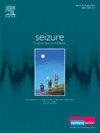Risk factors to predict mortality in people with seizures reattending emergency departments: a dual-centre study
IF 2.8
3区 医学
Q2 CLINICAL NEUROLOGY
引用次数: 0
Abstract
Background
Recurrent seizure-related emergency department (ED) attendances are common and associated with poor outcomes. We aimed to identify factors associated with repeated seizure-related ED use and to develop a mortality risk score among individuals re-attending with seizures.
Methods
We conducted a retrospective cohort study across two district general hospitals in South-West England, Royal Cornwall Hospitals NHS Trust (RCH; 2015–2018) and Royal United Hospitals Bath NHS Trust (RUH; 2018–2022). Adults (≥18 years) with ≥2 seizure-related ED attendances were included. Negative binomial regression was used to examine demographic and clinical predictors of repeat attendances. A risk score based on these predictors was developed and applied to individuals presenting with a first seizure. Cox proportional hazards models estimated the association between risk score tertiles and all-cause mortality, adjusted for age and sex.
Results
A total of 997 patients were included (RUH n = 547; RCH n = 450). Increased frequency of seizure-related ED attendances was independently associated with higher socioeconomic deprivation (IRR 1.16, p = 0.01), homelessness (IRR 1.76, p < 0.01), and mental health conditions (IRR 1.24, p < 0.01). Intellectual disability showed a marginal association (IRR 1.12, p = 0.09). Among patients with a first seizure, those in the middle risk score tertile had significantly increased mortality risk at RUH (HR 2.14, 95 % CI 1.05–4.34). Associations were not statistically significant at RCH.
Conclusions
Sociodemographic and clinical factors contribute to repeated seizure-related ED attendances. A simple risk score may stratify mortality risk after first seizure reattendance, warranting further validation. Targeted multidisciplinary interventions may improve outcomes and reduce unnecessary ED use.
预测急诊科癫痫患者死亡率的危险因素:一项双中心研究
背景:反复发作相关的急诊科(ED)就诊是常见的,并且与不良预后相关。我们的目的是确定与反复发作相关的ED使用相关的因素,并在再次发作的个体中制定死亡率风险评分。方法:我们对英格兰西南部的两家区级综合医院——皇家康沃尔医院NHS信托基金(RCH; 2015-2018)和皇家联合医院Bath NHS信托基金(RUH; 2018-2022)进行了回顾性队列研究。成人(≥18岁)≥2次癫痫相关ED就诊。负二项回归用于检查重复就诊的人口学和临床预测因素。基于这些预测因素的风险评分被开发并应用于首次癫痫发作的个体。Cox比例风险模型估计了风险评分分位数与全因死亡率之间的关系,并根据年龄和性别进行了调整。结果:共纳入997例患者(RUH n = 547; RCH n = 450)。与癫痫发作相关的ED就诊频率增加与较高的社会经济剥夺(IRR 1.16, p = 0.01)、无家可归(IRR 1.76, p < 0.01)和精神健康状况(IRR 1.24, p < 0.01)独立相关。智力残疾呈边缘相关性(IRR 1.12, p = 0.09)。在首次发作的患者中,处于中等风险评分的患者在RUH时的死亡风险显著增加(HR 2.14, 95% CI 1.05-4.34)。RCH的相关性无统计学意义。结论:社会人口学和临床因素与癫痫发作相关的急诊科反复就诊有关。一个简单的风险评分可以对首次癫痫再次发作后的死亡风险进行分层,需要进一步验证。有针对性的多学科干预可以改善结果并减少不必要的ED使用。
本文章由计算机程序翻译,如有差异,请以英文原文为准。
求助全文
约1分钟内获得全文
求助全文
来源期刊

Seizure-European Journal of Epilepsy
医学-临床神经学
CiteScore
5.60
自引率
6.70%
发文量
231
审稿时长
34 days
期刊介绍:
Seizure - European Journal of Epilepsy is an international journal owned by Epilepsy Action (the largest member led epilepsy organisation in the UK). It provides a forum for papers on all topics related to epilepsy and seizure disorders.
 求助内容:
求助内容: 应助结果提醒方式:
应助结果提醒方式:


